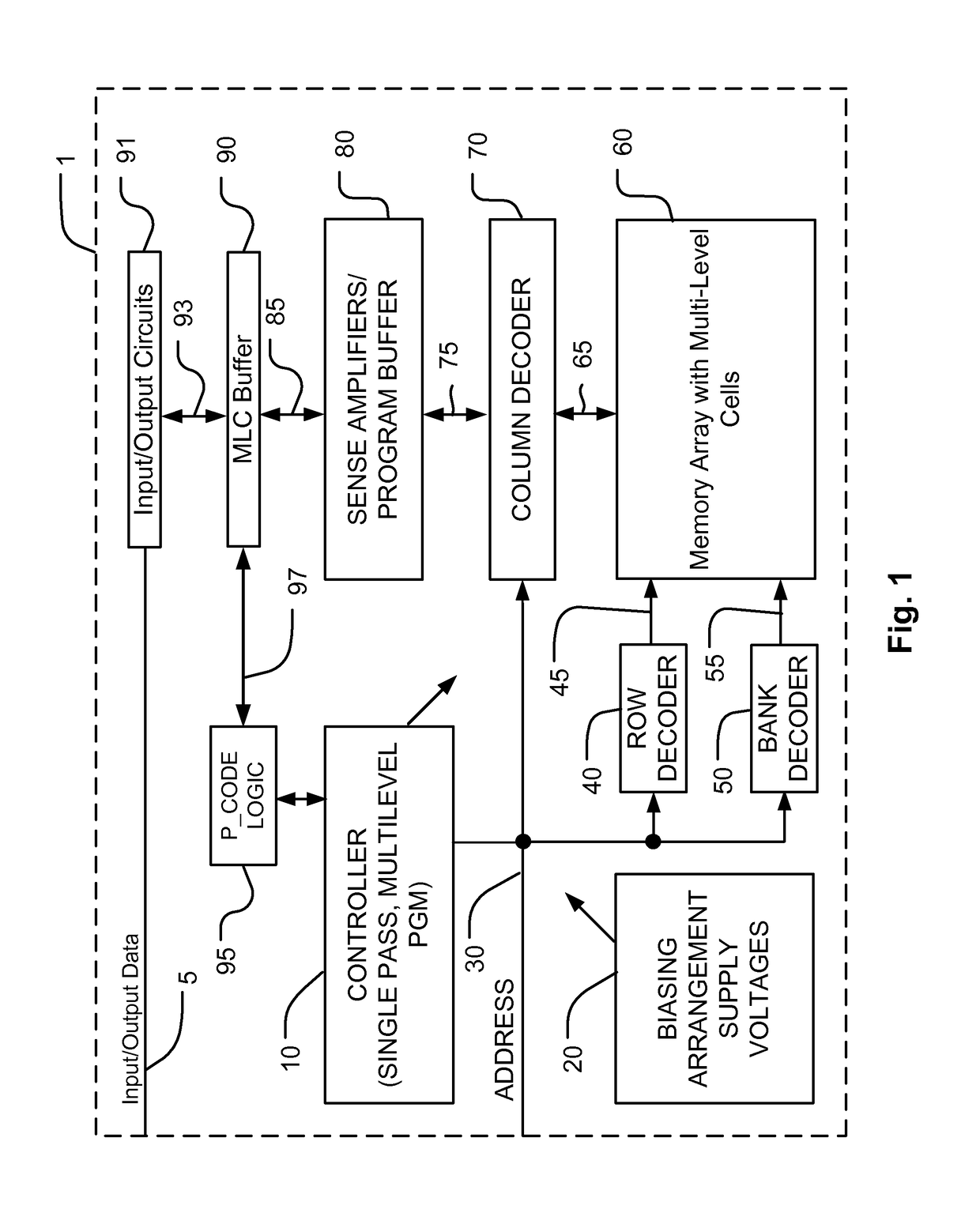Programming multibit memory cells
a multi-bit memory and programming technology, applied in the field of high-density memory devices, can solve the problems of consuming significant amounts of time for programming operations for multiple bit per cell technologies, and affecting the data held in cells, and achieve the effect of tightening distribution and less disturban
- Summary
- Abstract
- Description
- Claims
- Application Information
AI Technical Summary
Benefits of technology
Problems solved by technology
Method used
Image
Examples
Embodiment Construction
[0045]A detailed description of embodiments is provided with reference to the FIGS. 1-30. FIG. 1 is a simplified chip block diagram of an integrated circuit 1 configured for one-pass, multiple-level programming operations. The integrated circuit 1 includes a memory array 60 including multiple-level cells MLC that store more than one bit of data per cell, on an integrated circuit substrate.
[0046]A row decoder 40 is coupled to a plurality of word lines 45, and arranged along rows in the memory array 60. A bank decoder 50 is coupled to a plurality of bank select lines 55 (such as SSL lines and GSL lines). A column decoder 70 is coupled to a plurality of bit lines 65 arranged along columns in the memory array 60 for reading data from and writing data to the memory array 60. Addresses are supplied on bus 30 from control logic 10 to column decoder 70, and row decoder 40. A sense amplifier and program buffer circuits 80 are coupled to the column decoder 70, in this example via a first data...
PUM
 Login to View More
Login to View More Abstract
Description
Claims
Application Information
 Login to View More
Login to View More - R&D
- Intellectual Property
- Life Sciences
- Materials
- Tech Scout
- Unparalleled Data Quality
- Higher Quality Content
- 60% Fewer Hallucinations
Browse by: Latest US Patents, China's latest patents, Technical Efficacy Thesaurus, Application Domain, Technology Topic, Popular Technical Reports.
© 2025 PatSnap. All rights reserved.Legal|Privacy policy|Modern Slavery Act Transparency Statement|Sitemap|About US| Contact US: help@patsnap.com



